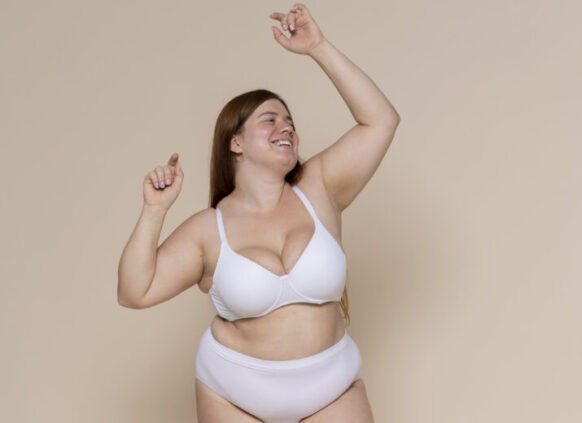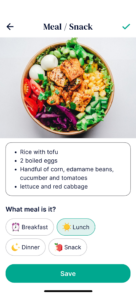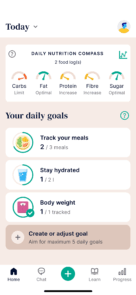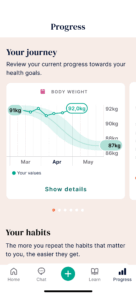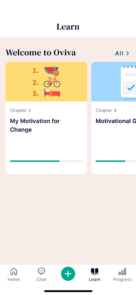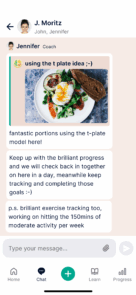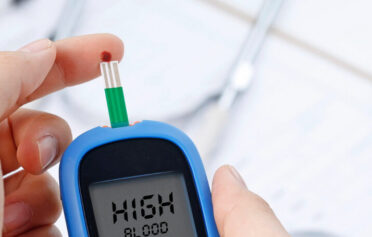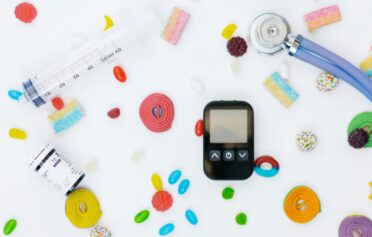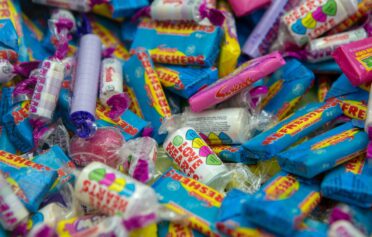
Total diet replacement: a week in the life & your TDR questions answered
About to start the Total Diet Replacement (TDR) programme or interested in it for yourself? Explore a week in the life of TDR with one of our registered dietitians, Rachel. You’ll gain insight into what it entails day to day, and how you might feel during the plan.
Rachel completes the plan for one week. However, most TDR programmes will run for 12 weeks.
The TDR plan is available for people in the UK who have received a type 2 diabetes diagnosis within the last six years.
Key Takeaways
- Total diet replacement (TDR) replaces meals with nutritionally complete products like shakes and soups.
- It limits daily calorie intake to 800–850 kcal for a set time frame (typically around 12 weeks).
- It’s designed for people aged 18–65 with type 2 diabetes and a BMI over 35 (25 for some ethnic minority backgrounds).
- Patients aim to lose around 10% of their starting body weight, which can improve health outcomes such as blood glucose levels and support type 2 diabetes remission.
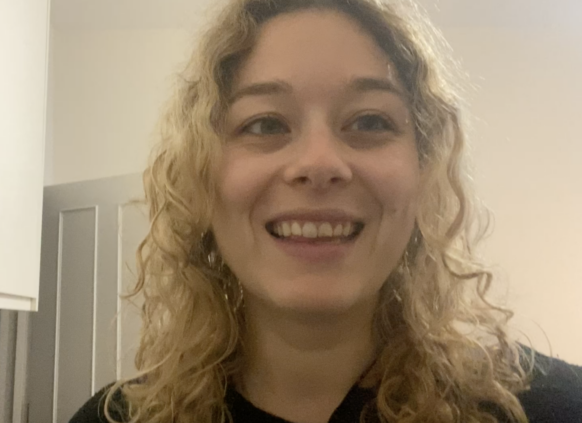
Hi, I’m Rachel, a registered dietitian at Oviva. My role here is quite diverse, from clinical research and innovation to providing care for people on our NHS Type 2 Diabetes Path to Remission programme. As part of this programme, we incorporate a low calorie diet using the Total Diet Replacement (TDR) plan to support participants in achieving rapid weight loss.
To better understand what our patients go through, I’m going to follow the TDR plan for one week. I’m keeping a diary to document my mood, energy levels, hunger, and ability to concentrate.
Join me on this adventure as I experience TDR first-hand! I’ll be sharing my personal insights and observations, providing a first-hand account of what it’s like to undergo this intensive weight loss journey.
What is Total Diet Replacement?
Total Diet Replacement (TDR) is a weight loss plan where all your regular meals and snacks are replaced with specially designed products, like shakes, soups, and bars. These products are packed with all the essential nutrients your body needs to stay healthy while helping you lose weight.
In the UK, TDR plans typically involve following a low-calorie diet of around 600 to 1,200 calories a day, depending on individual needs and goals. These plans should always be supported by healthcare professionals to ensure safe and effective weight loss.
At Oviva, we use TDR to follow a low-calorie diet of around 800 calories a day. With the help of a coach, this method is easier to stick to compared to traditional calorie counting and strict portion control. Plus, it ensures you get all the nutrition you need for overall health. TDR may be challenging, but it offers fantastic results for those who successfully commit to it.

How am I feeling before starting TDR?
I must admit, I’m feeling a mix of excitement and nervousness. As a dietitian, I’m always encouraging my patients to make healthy choices, but now it’s time for me to experience it firsthand.
I’m expecting the first few days to be really hard. My focus and energy levels are likely to drop as I get used to the new calorie intake.
I have a few social plans which will be a good test, as I won’t be having any food when I’m out, or I will need to order no-calorie drinks. It will also be interesting bringing all my products into the office. I have a slight advantage here, as most of my co-workers will be very familiar with the TDR products and understand what I’m doing.
However, it will be interesting to see how I manage the temptation if people bring treats into the office (as they often do) or when my housemates are eating nice food when I’m home.
Let’s dive into this experiment!
Day 1
Today I surprised myself, as it wasn’t as hard as I thought it would be.
The first shakes and my “lunchtime” soup were fine although I did find myself finishing them quite quickly.
My energy levels remained steady until around 4pm when hunger struck and I felt my energy plummet. Just when I thought my housemate cooking dinner would make it worse, talking with her actually helped distract me, and my hunger vanished while my energy levels picked back up.
To keep my spirits high, I had my third shake before my evening Italian lesson. Although I was fine for most of the lesson, towards the end, my concentration waned, and I struggled to recall common words. Ending on a sweet note, I had my last chocolate-flavour shake later on in the evening as a treat.
Overall, I had a really good day and it was surprisingly not as hard as I anticipated. I did notice moments when I would usually pick at things if I went into the kitchen, as it’s a lot more obvious now that I’m not allowed to have them.
Day 2
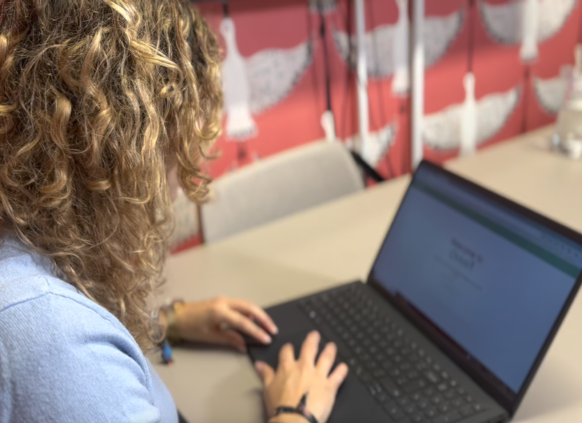
I’m feeling a bit sluggish, but I expected this as my body adjusts to the reduced calorie intake. Waking up early for work affected my concentration and focus, making it hard to tell if it was due to the diet or lack of sleep.
At lunch, I sat with my colleagues who were enjoying their regular meals while I had my soup. Surprisingly, it wasn’t as bad as I expected, thanks to their knowledge about low-calorie diets. They had some questions, but it was manageable. To add some variety, I should experiment with different spices and herbs in my soups.
The temptation of leftover Halloween sweets in the office was tough, but I treated myself to a low-calorie fizzy drink in the afternoon to boost my energy. However, by 4pm, my energy levels dipped, possibly due to the clocks changing and the earlier sunset. I had my third product in the office and prepped my final shake before heading out the door to go to the cinema.
My flatmates had booked tickets for a 3.5 hour film. I knew I’d have to have my final shake during it, I wouldn’t be able to wait until I got home! Sipping it slowly worked well and helped me feel full while seeming like I was participating in having something to drink at the cinema.
When I got home, my housemates ordered a tempting pizza takeaway. Initially, it was difficult to resist, but after a while, the hunger feelings and cravings passed.
Day 3
Today was a much-needed day at home after a long day at the office yesterday. But I had something exciting planned for the evening – a dance experience class with my friends!
Knowing that I needed to time my products right, I had a late breakfast and lunch. However, the smell of my housemate’s instant Pho meal was so tempting. It’s amazing how my sense of smell has improved since starting this programme, though I wonder if it’s just because I miss food.
To stay fuelled for the dance class, I brought my products, shaker, and water bottle along. Whenever my energy dipped, I sipped on my product and it helped me power through. The class itself wasn’t too intense, but it was a great distraction and I loved the chance to get out of the house.
Overall, it was a successful day, balancing my low-calorie diet and enjoying a fun evening with friends.
Day 4
Halfway through the week already!
Today, being the weekend, I treated myself to a well-deserved lie-in and so threw my eating pattern off. I’ve noticed a habit of mine – eating “just in case” I might get hungry or need a boost of energy. But now, thanks to the programme, I’ve realised that I can actually manage just fine without those extra snacks. Even if I feel a bit low on energy or hungry, it passes after about 20 minutes.
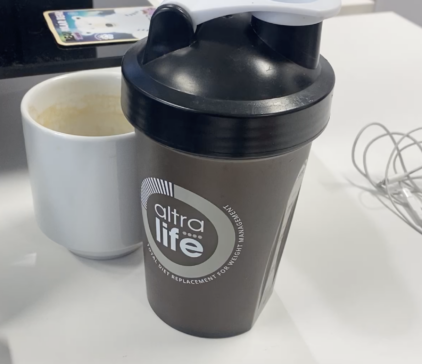
I was a tad worried about the weekend since I didn’t have work to keep me distracted. But turns out, I didn’t need to fret. I had planned some housework as a distraction, but I ended up enjoying some much-needed relaxation instead.
Later in the evening, I met up with a friend who had a few alcoholic drinks, while I opted for a diet coke. When he decided to grab some food at a kebab shop, I faced some serious temptation when I saw his incredible looking chicken wrap. Luckily, I had saved one of my products for when I got home, making it easier to resist. I knew I could satisfy my hunger with that.
Overall, the weekend was a success, and I’m learning so much about myself and my relationship with food through this low-calorie diet journey.
Day 5
Last night was a restless one, and today’s early morning mission for Glastonbury tickets left me feeling even more drained (unfortunately, no luck on the tickets). The lack of sleep really took a toll on my energy levels and appetite. But, I’ve learned something valuable from this experience – I don’t need to turn to food or higher calorie days when I’m tired. I can push through without overindulging.
To distract myself from the fatigue, I had a lovely video call with my Mum in the evening. Later on, I watched the tennis men’s final with my housemates. However, disaster struck when the lid of my shake popped off, causing me to spill some of the product. Talk about bad luck! This mishap might explain why I felt hungrier later in the evening.
For the first time since starting this diet, I went to bed feeling a little hungry instead of satisfied. Today was undeniably the toughest day so far, likely due to the lack of sleep. But I’m determined to power through and gain a deeper understanding of what my patients go through.
Day 6
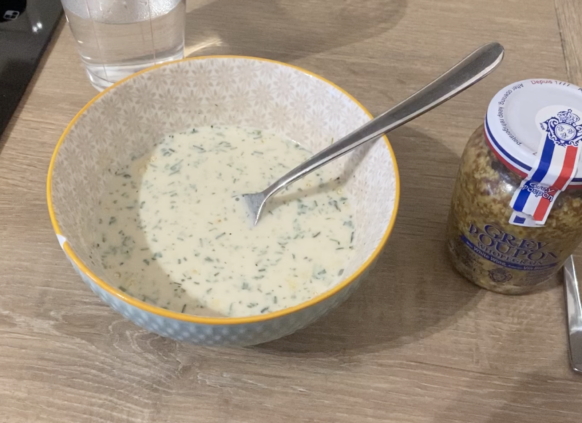
This morning, I woke up feeling exhausted, likely because I went to bed hungry last night. I tried to postpone having my shake, but eventually gave in as my concentration started to fade. It was a struggle to focus at work.
For lunch, I opted for a soup product. I’ve been enjoying experimenting with different low- or no-calorie flavours to improve and enhance the taste. Today, I tried adding a teaspoon of wholegrain mustard which worked wonders. Another day I tried garlic and paprika which was also really tasty!
Luckily, I have a long break in the afternoon on Mondays, so I took the opportunity to relax and recharge. After this much-needed rest, I felt a significant boost in my energy and concentration levels. I delivered a group patient drop-in session and then attended my hour-long Italian class. The improvement since the last class was remarkable; I didn’t struggle as much with vocabulary or verb conjugation. In the evening, I had the house to myself, allowing me to unwind and watch TV without any distractions from cooking.
Overall, today had its challenges, but I managed to find moments of rest and progress.
Day 7
I can’t believe I’m nearing the end of my TDR experiment.
I woke up excited because tomorrow would be my last day on this diet. I had a few early morning meetings, so I decided to have my first product at 11am. I’ve found that starting later helps reduce my appetite and hunger cravings.
After a meeting about our office Christmas party, I felt inspired to add 1 teaspoon of mixed spice to my vanilla shake. It was a great addition and I didn’t experience any low energy or hunger cravings today. I’m getting into the routine of this diet and I’m confident in delaying my meal replacement until I really need it.
In the evening, while watching a film with my housemates, I tried a new way of having the product. I mixed it with a small amount of water and my remaining milk allowance, then heated it in the oven at about 60/70C. It was a chocolatey treat that added some variety to my diet. I wouldn’t do it too often to ensure I get all the necessary vitamins and minerals which can be affected by the heat, but it was a nice change.
Overall, today was a good day and I’m looking forward to completing this diet tomorrow.
Day 8

Last day on TDR! I was in the office today, so I had to wake up early again. Surprisingly, I had a lot of energy today, which was great.
I had lunch with colleagues, and I’m getting used to eating my products while others have regular meals. It didn’t bother me at all. Having the soups on their own without any herbs or spices was a bit different, but not bad.
Usually, I need a product in the afternoon to boost my energy during my slump, but today I had back-to-back meetings, so I didn’t even notice any hunger or tiredness.
I had my final product on the way to the tube. I was going to a local cinema for a talk by Director Edgar Wright, who directed the Cornetto trilogy films. When I got to the cinema, they were giving out Cornettos, which was a clever idea. Since it was my last day on TDR, I decided to have it as it was part of a special experience and not just a regular cinema trip.
This was my first bit of food in a week, and it felt strange. The ice cream was a bit melted but it felt tougher to chew on. It took me longer to finish it compared to how quickly I usually eat ice cream. I also felt it was a bit heavier in my stomach compared to the TDR products.
Overall, it was enjoyable, but it was also interesting to observe the changes since starting the TDR products.
Reintroducing food
Today was my first day post-TDR and I was curious to see how my eating habits have changed!
For breakfast, I had some breakfast biscuits that took me a while to chew through. Surprisingly, I felt quite full afterwards. I still didn’t feel hungry by lunchtime, so I kept working until I actually felt hungry. This is something I’ve gotten better at since finishing TDR.
In the past, I would eat just because it was the designated time, regardless of hunger. Thankfully, working from home allows me to adjust my schedule accordingly.
For lunch, I had a homemade lunchables snack pot with veggie sticks. It took me about 20 minutes to finish, and I felt satisfied afterwards. Usually, I can devour a meal in 10 minutes if I’m hungry so this was new for me.
In the evening, my housemates and I had made a reservation at an Indian sharing plates restaurant. I was really excited for it and thoroughly enjoyed the meal. However, afterwards, I felt incredibly full and lethargic. I realised that I may have ignored my hunger cues and overindulged. In hindsight, it probably wasn’t the best idea to have such a big meal right after finishing TDR.
Overall, I loved being more in tune with my hunger cues, but I need to be mindful of not overeating. Lesson learned for next time!
What I’ve learnt
- Hunger pangs and cravings will pass. I realised during this week that there were quite a few times that I would have eaten something because I was “hungry” but if the hunger feeling passed after 20 minutes was it really hunger or was it a craving. I’ve probably had a lot of snacks because I felt like I needed it rather than actually needing it for nutrition or nourishment.
- Wait before getting more portions or an additional snack. Quite a few times during the week I still felt hungry after taking the product and usually I probably would have had something else as I was still hungry. But then about 30 minutes later I would feel full and would have forgotten that I wasn’t “satisfied” after finishing my meal. I think in the future I’ll wait to see if I actually need something else.
- Just because you feel low in energy doesn’t mean you need to eat. I’ve often eaten straight after work because I felt low in energy or felt like I should eat something rather than actually being hungry. I found eating too early in the evening means that there is more time later for you to feel hungry.
- You are more satisfied after a meal if you’re more mindful of it. Because the shakes and soups didn’t have a lot of volume I was conscious of not rushing them and making sure I properly savoured the meal. I continued this the day after TDR and for the few days since. I get a lot more enjoyment out of a meal when I take my time with it and really pay attention to it. Often we eat with the TV on or talking to other people so our attention isn’t fully on our food. I find that I don’t feel as satisfied or I feel hungrier after a meal if I don’t fully pay attention to it or rush it.
Conclusion
My week on the TDR plan has been eye-opening – I’m grateful for this experience, and it has deepened my understanding and empathy for the challenges my patients face on their weight loss journey.
As a dietitian, I’m more motivated than ever to provide them with the support and guidance they need to achieve their health goals.
Individual experiences may vary, and it’s essential to work closely with a healthcare professional when embarking on a diet plan like this.

How to succeed on a TDR plan, from a health psychologist
The following tips and strategies are approved by our in-house health psychologist, Dr Vicky Lawson, to help you stay the course and navigate the challenges of a total food replacement diet.
Take steps to prepare
If you share a house, speak to the people you live with about how they can help you when it comes to removing food temptations from the kitchen.
Consider giving any food in the cupboard to a friend or family member and separate your TDR meal replacement foods from the rest of the food in your house.
If you live alone, consider clearing out your fridge and cupboards of all foods before you start. You can always donate the suitable items to a food bank or give them to friends and family.
While this may seem drastic, it will reduce temptations and help you stick to your plan.
Seek support
It’s important to have good support systems while on the total diet replacement plan.
In addition to accessing the professional support available, like the support we offer at Oviva and your GP, you should speak to your friends and family about the programme in advance.
Making the people around you aware of your new lifestyle will help you avoid situations where they offer you foods you can’t eat. Your friends and family can also show their support and help you navigate periods when the plan becomes emotionally challenging.

Build healthy habits
Long-term change is all about building healthy behaviours into your routine that can become habits.
To maximise your chances of success on TDR, adopt behaviours that can develop into healthy weight loss habits over time. Examples include tracking your progress, exercising regularly and drinking plenty of water so you stay hydrated throughout the 12 weeks.
When you eat your meal replacement shakes, soups and bars, try to eat mindfully, paying attention to how they taste, how they make you feel and how your energy levels change.
Moving after your meals, such as going for a short walk, can also help.
All of these behaviours will not only help you to stay on track during the total diet replacement phase of the programme. They’ll also stand you in good stead as you reintroduce food after the first 12 weeks and stick to a diet that can be sustained over the longer term.
How much weight can I lose on TDR?
Aiming to lose around 10% of your starting body weight during the total diet replacement phase of the programme is a realistic goal.
This amount of weight loss can boost your health outcomes, including improving your blood glucose levels and potentially putting you on the path to type 2 diabetes remission.
If you cannot lose this amount of weight in the TDR phase, you can continue to work towards this goal during the food reintroduction phase of the programme. During this, you’ll continue to receive support and learn to expand your diet healthily and sustainably.
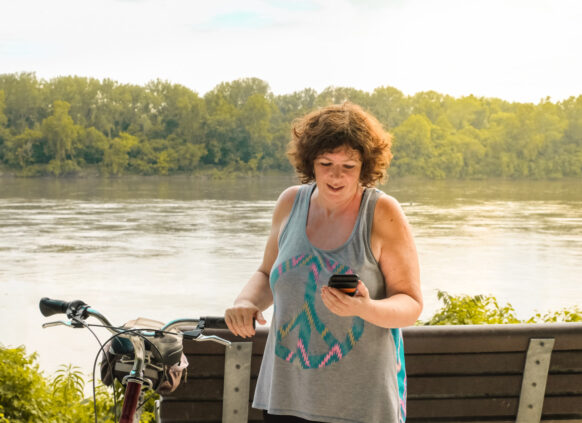
Who is a total diet replacement plan for?
The TDR plan is used as part of the NHS Type 2 Diabetes Path to Remission programme. Oviva is accredited by the NHS to deliver the programme to people living with type 2 diabetes who meet the eligibility criteria. To join the programme, you’ll need to be:
- Aged between 18 and 65 years old
- Diagnosed with type 2 diabetes within the last 6 years
- Have a BMI over 35 (over 25 for people from some ethnic minority backgrounds)
- Be registered in a location where Oviva is available
You can use our free BMI calculator if you’re unsure of your body mass index (BMI).
The total diet replacement plan is not suitable if you’re pregnant. If you’re taking medication for other health conditions, speak to your GP to see whether the plan is compatible with your treatment. If you’re over the age of 65, you’re not a suitable candidate for the programme.
How many calories will I eat per day on TDR?
During the TDR phase of the programme, the aim is to restrict your daily calorie intake to around 800 to 850 kcal. Thankfully, you’ll be given meal replacement products, and the calorie content of these products has already been calculated for you. You do not need to count calories; you simply eat meal replacement products instead of meals.
What can I eat on a TDR plan?
While on the TDR plan, you substitute meals for meal replacement products. These include meal replacement shakes, soups and bars, which you eat for breakfast, lunch and dinner.
The meal replacement products are also fully funded by the NHS.
You can still drink water and have sugar-free drinks. It’s essential to stay hydrated throughout. You can also have sugar-free chewing gum and tea or coffee with a small amount of low-fat milk.

What can’t I eat?
When on a TDR plan, you’re supposed to avoid any foods and drinks that contain calories aside from the meal replacement products you’ve been given as part of the programme.
Avoid sugary drinks, chewing gum containing sugar and all other conventional foods and snacks. You should avoid fruit and fruit juices, as even products labelled “no added sugar” will often contain high amounts of natural sugar and a substantial number of calories.
Avoid calories from sources other than your meal replacement products to ensure your daily calorie intake is in the right range for the TDR plan.
Will I get all the nutrition I need?
Yes. Your meal replacement products are nutritionally complete. In other words, you’ll receive all of the essential nutrients you need throughout the TDR phase of the plan.
It’s normal to experience a reduction in energy levels and feelings of hunger during this phase. This does not mean you lack any essential nutrients your body needs.
Are there any side effects?
Adapting a low-calorie diet can lead to side effects, as your body won’t be used to reducing energy intake. This is normal, and the effects are usually manageable.
Some of the most common side effects include:
- Fatigue or feeling low on energy
- Headaches
- Dizziness
- Constipation
- Dry mouth or feeling dehydrated
Make sure you drink plenty of sugar-free fluids to minimise feelings of dehydration. Speak to your coaching team about side effects for advice on managing or preventing them.
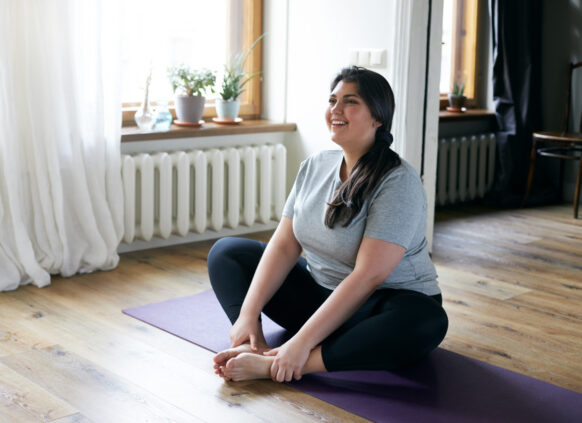
What will the programme look like?
After an initial assessment and consultation, when you’ll be told about the programme and have the opportunity to discuss your goals, you’ll start with the 12-week TDR plan. This involves taking meal replacement products every day instead of your usual meals.
TDR plans are a significant change to your regular diet, and you’ll receive personalised support from our expert coaching team throughout. This will make it easier to adjust to the plan, deal with the emotional and physical challenges, and allow you to ask questions and seek advice.
With Oviva, support is available remotely, so you don’t need to attend in-person appointments.
After 12 weeks, you’ll enter the food reintroduction phase, where you’ll gradually reintroduce normal foods. During this phase, you’ll receive close support and advice again, including help implementing the best diet for weight loss and type 2 diabetes management.
Can I do TDR alone?
A total diet replacement plan is a significant change from your regular diet and involves severely restricting calorie intake. It’s also not suitable for everybody. For this reason, you should only start a TDR as part of an accredited weight management or diabetes management programme.
It’s essential to have the support of healthcare professionals and to follow their advice. Medical supervision can help you to manage side effects and follow the right steps for success.
Make sure you meet the eligibility criteria and speak to your GP to determine whether you’re a suitable candidate for the NHS Type 2 Diabetes Path to Remission programme.
How to start your TDR plan
If you’re eligible for the NHS Type 2 Diabetes Path to Remission programme, you can start your TDR plan by speaking to your GP. If you’re interested in being part of the Oviva programme, ask your GP for a referral to Oviva.
If you meet certain criteria, including living in an area covered by Oviva, you’ll be able to join the programme.
Once accepted, you can download the Oviva app, which allows you to track your food, weight, mood, and exercise and communicate with your coach. This is important because engaging with healthcare professionals is vital for implementing a TDR plan.
You’ll be guided through the first 12 weeks, where you’ll replace your meals with meal-replacement shakes and soups. After this, you’ll reintroduce foods gradually. Oviva’s dietitians can help you to move back to conventional foods and adopt a sustainable and healthy diet plan.
The programme aims to help you to achieve remission of type 2 diabetes or reduce your medication needs.
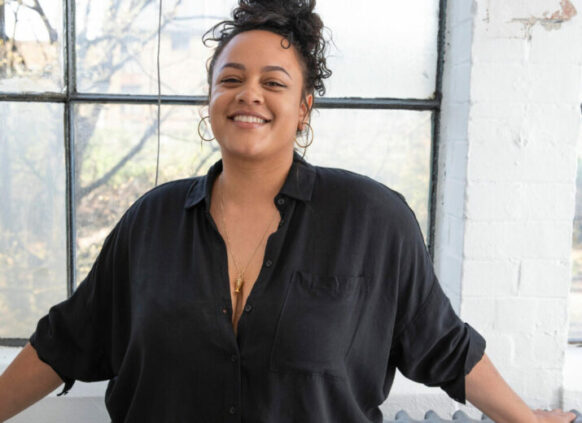
Looking for a weight management service?
If you’re looking for a weight management service, rather than a programme aimed at type 2 diabetes remission, Oviva’s Tier 3 Weight Management programme could be just what you’re looking for. This is a holistic approach to weight loss that covers diet, exercise and mental health.
As part of this service, you may be able to access TDR treatment, although the precise approach to weight loss is tailored to your unique needs and circumstances. You’ll have access to doctors, psychologists and dietitians, who will teach you sustainable weight loss strategies.
You may also have access to prescription weight loss medication via the NHS.
Over users lost an average of 13.6 kg over a period of 12 months, and that’s why 97% of Oviva would recommend us.
